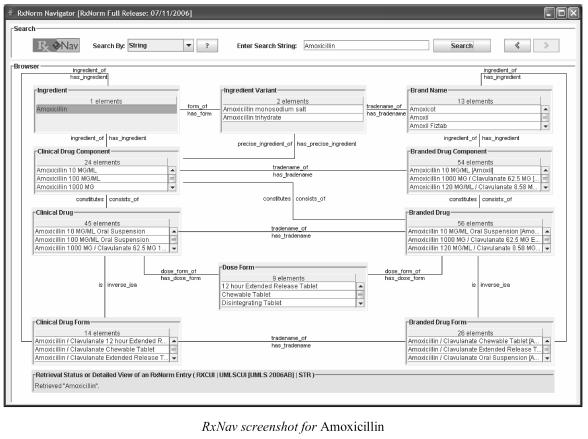RxNav1 is a browser for RxNorm2, the NLM repository of standard names for clinical drugs. RxNav displays links from clinical drugs, both branded and generic, to their active ingredients, drug components and related brand names. The current dataset (July 11, 2006) comprises 5,591 ingredients, 10,998 brand names, 13,913 clinical drug components, 17,788 clinical drugs, 13,850 branded drugs, 13,253 branded drug component, 8,296 clinical drug forms, 10,862 branded drug forms and 140 dose forms. RxNorm is one of a suite of designated standards for use in U.S. Federal Government systems for the electronic exchange of clinical health information.
RxNav has been successfully deployed for almost two years, with an average of about 20 users per day. RxNav has been recently redesigned using web services, i.e., a collection of protocols and standards used for exchanging data between applications, resulting in the improvement of several of its features.
Open Access
Data are now transferred over port 80, which is the port used by default by the http protocol. This is particularly important for those RxNav users working behind a corporate firewall.
Efficient Access
Web service protocols are very efficient at both ends of the communication line. The performance of the serialization/deserialization mechanism is comparable to other communication protocols, such as JDBC, socket, and RMI.
Easy Access
Because web services use XML for transferring data, no specific programming language is requested for accessing the service. In the future, an application programming interface (API) providing fine-grained control over RxNorm data retrieval will be released.



